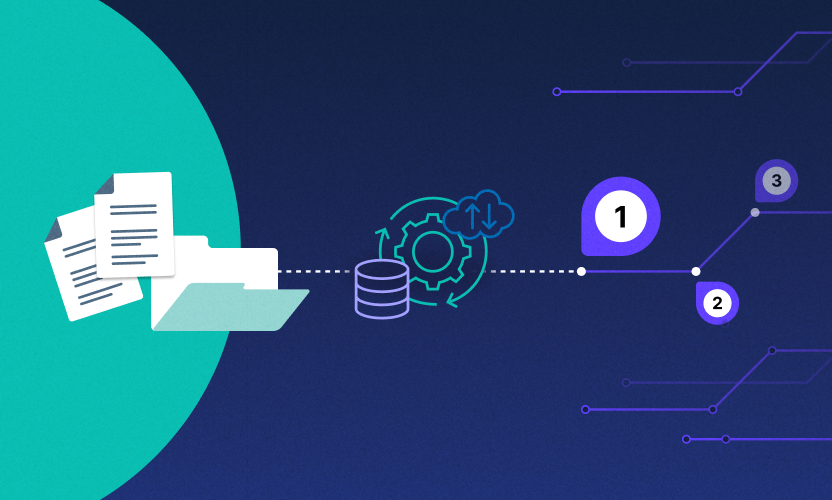
There is no Artificial Intelligence without Machine Learning
The driving force behind a business revolution
Machine learning (ML) technology has the potential to generate tremendous value for businesses. It is already proving itself in the market and powering a growing number of tools across virtually every industry. In order to discuss the current capabilities of ML, we must first examine how it relates to artificial intelligence (AI). Then, we can explore where ML software is today, its real-world applications, and how it’s transforming business.
Trends in AI and ML
AI and ML are today’s hottest topics in tech. Last year, Gartner forecasted that AI foundations and intelligent apps and analytics would be among the top 10 strategic trends for 2018. Similarly, experts from IEEE Computer Society predict that ML, especially deep learning (DL), will be among the top 10 technology trends for 2019.
These predictions have already been met by major IT leaders selling products powered by ML algorithms. These solutions include virtual personal assistants and chatbots, like Siri, Cortana, and Alexa, medical diagnostics, and autonomous vehicles. As the capabilities of this technology grow, it’s important to consider its potential and at what stage we are in its evolution.
The AI hype
The concept of adding human intelligence to machines has excited tech enthusiasts for decades. However, such powerful science could seriously alter the course of history, which is why many people fear advanced AI will spell the end of humans altogether. This grim vision of the future stems from a concept called the “intelligence explosion,” which supposes that once AI with human intelligence is created, it can continually improve itself until it surpasses human intelligence (superintelligence). As British mathematician and cryptologist, I.J. Good wrote, “the first ultraintelligent machine is the last invention that man need ever make.” Even Elon Musk claimed that “AI is a fundamental risk to the existence of human civilization," while the late Stephen Hawking declared he “fears that AI may replace humans altogether.”
Many have voiced concerns about the future of AI and there’s no shortage of pop culture references for man-made machines going rogue—The Matrix, Ex machina, and HAL9000 from 2001: A Space Odyssey. These cases illustrate the first stage in a process referred to as “artificial general intelligence (AGI) or “strong AI,” in which AI learns to form and manipulate abstract concepts, without being limited by a single field of expertise. It’s hard to believe we’d ever be able to control AGI once it’s created, but how close is today’s AI to becoming better than humans at AI design? Are we actually at risk?
AI today
There are computational limits to how intelligent a system can become and strong AI is still just a fantasy for developers. The capabilities of today’s AI are far from those presented in sci-fi fantasies and almost all rely on ML techniques to achieve them. Although AI can produce spectacular results, it is still greatly limited. For example, the AlphaGo system famous for defeating the world’s best human Go players can’t even manage a simple game of Tic-Tac-Toe. It’s better to focus on the technology making waves in industries around the globe.
There is no AI without ML
The road to AI is paved with revolutionary tech, including ML. While these concepts are related, they are not identical. AI refers to the wide set of capabilities that enable machines to make smart decisions, while ML is simply a technique for implementing it. Although many organizations are interested in using AI, ML is currently positioned as the primary way forward to maximize business outcomes. ML operates in the background, giving computer systems the ability to perform certain tasks without being explicitly programmed. It uses neural networks to make code more efficient, adapting to new data without being rewritten. A classic example for the practical application of ML is spam detection; by providing enough examples of spam emails, a system can “learn” to recognize unwanted emails. With ML, there is no need to explain to the system what a spam email is. Compared to AI, there are presently more business problems for ML to address.
ML for data security
Imagine that Bob plans to leave his company. Just before departing, he downloads hundreds of new project files, including sensitive financial documents. IT takes action, investigating ways to prevent similar incidents in the future. They consider setting limits to the total number of files employees can download, and even look at hand-crafting system rules specific to file type. However, restricting downloads across the board would not only hurt user productivity, but also negatively impact high-volume days. The right solution must identify, adapt, and respond to individual user behavior, which requires some level of ML. This is just one scenario for which ML is perfectly positioned to provide business security without affecting overall output. In addition to adaptive data protection, there are many real-world applications for this technology, like UI design and business optimization.
ML enhances UI
The term “interface” often refers to computer screens and graphics, but ML is helping to change that. ML has become integral to the development of conversational interfaces, improving human-machine interactions and product usability. With the advent of chatbots, messaging apps, and virtual assistants/smart speakers (Amazon Alexa, Google Home), consumers can interact with products/services without using a complicated graphical interface—in a way that’s inherently comfortable. Conversational interfaces establish a direct dialog between human and computer using simple, spoken language. They’re becoming increasingly sophisticated, and can adapt to each user through language processing algorithms. ML is the driving force behind these customer-facing technologies and is helping to push the envelope for businesses use-cases.
ML drives performance optimization
ML makes performance optimization possible for so many applications and is widely used to improve the way entire systems work. These systems can be relatively simple, like an Android phone that uses ML to optimize power consumption. Other systems can be large and complex, like using dynamic pricing to optimize the geographic spread of rideshare vehicles for companies like Uber and Lyft.
ML identifies insider threats
Remember Bob? During his last few days on the job, Bob stole a large amount of company data. Identifying an unusual number of user downloads is a feature that, while not directly user facing, requires ML algorithms to provide a manageable number of alerts, as well as detect suspicious activity. We have implemented this feature in Egnyte Protect, using ML-based techniques that forecast a “normal” number of downloads per user. If a user downloads an unusually large number of files, Egnyte Protect detects this behavior and sends an appropriate alert.
ML is here to stay
While AI and ML are growing trends in tech, we are far from experiencing the kind of AI represented in pop culture. Unlike AI fantasy, ML has already permeated a diverse landscape of real-world applications and garners more attention for having so many industry use-cases. Today, ML powers a variety of business processes, like improving customer-facing UI, optimizing system performance, and streamlining data security. For every complex system, ML has the potential to improve its performance, as well as redefine the problem it solves, making it the most sought after technique in programming.





